The Huntington’s blog takes you behind the scenes for a scholarly view of the collections.
Flourishing Lily Ponds
Posted on Wed., July 12, 2017 by
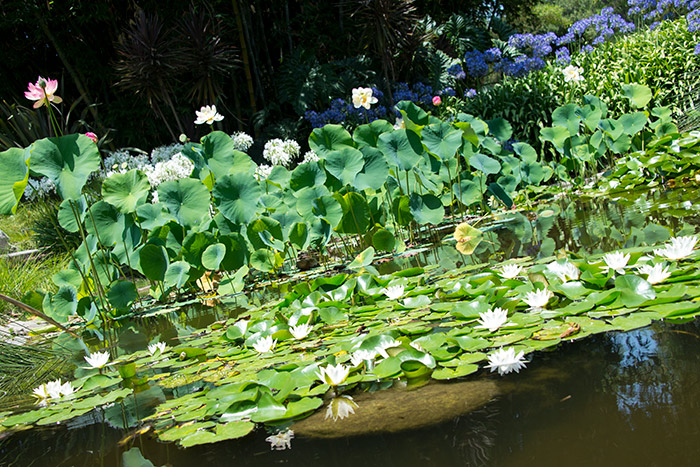
The Lily Ponds are looking better than ever after undergoing a major three-and-a-half-week cleaning last fall. Photo by Kate Lain.
The Lily Ponds, among the first garden features developed at The Huntington, are at their seasonal peak now. William Hertrich, Henry Huntington’s first superintendent of the gardens, created the five descending ponds from natural springs on the grounds in 1904. The two large and three small ponds surrounded by a grassy meadow replaced an unsightly gully in the gardens’ southeast corner. Hertrich first planted lotuses and water lilies in the Ponds in 1905 and, later, lined the shores with bamboo groves and added landmark conifer and redwood trees nearby.
The Ponds look better than ever after undergoing a major three-and-a-half-week cleaning last fall. Algae and muck had turned the water blackish brown. Boxes that had held the water lilies for many years were in poor shape and could no longer keep the plants from spreading unchecked.
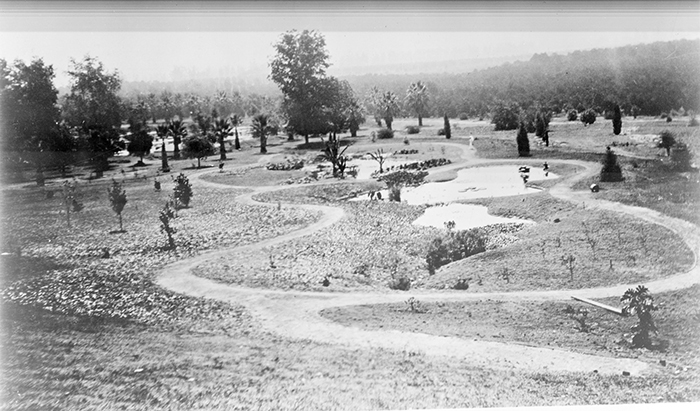
William Hertrich, Henry E. Huntington’s first superintendent of the gardens, created the five descending ponds from natural springs on the grounds in 1904. This view, taken by an unidentified photographer around 1906, shows the original design.
Today, an eye-popping swath of pink and white water lilies (Nymphaea ‘Arc-en-Ciel’, N. ‘Marliacea Chromatella’, N. ‘Fire Opal’, N. ‘Laydekeri’, and N. ‘Virginalis’) and lotus (Nelumbo nucifera), accented by the tall orange flowers of the canna lilies (Canna ‘Chocolate Inferno’), greets visitors. Bobbing purple and white heads of newly planted Lilies of the Nile (Agapanthus) border the ponds’ pathways. Clumping bamboo (predominantly Bambusa beecheyana), replacing dense running bamboo (Phyllostachys flexuosa), opens up the shoreline profile. A pool at the top of the ponds’ chain, revealed by soil clearance, offers a tiny oasis of swamp iris (Iris pseudacorus), daylilies (Hemerocallis ‘Elves’), and papyrus (Cyperus papyrus).
To make this spectacle possible, the renewal project team—led by Shadi Shihab, curator of Floristic Gardens—pumped water out of the ponds, distributing it on the adjacent grass, then rented a vacuum truck to remove the pond muck and washed the pond bottoms with hoses. They cut back the water lily overgrowth, replaced the old lily boxes, filled the new boxes with young plants, and added the canna lilies. The workers also repaired the mini-waterfalls connecting the ponds, restoring the cement that directs the flow of water.
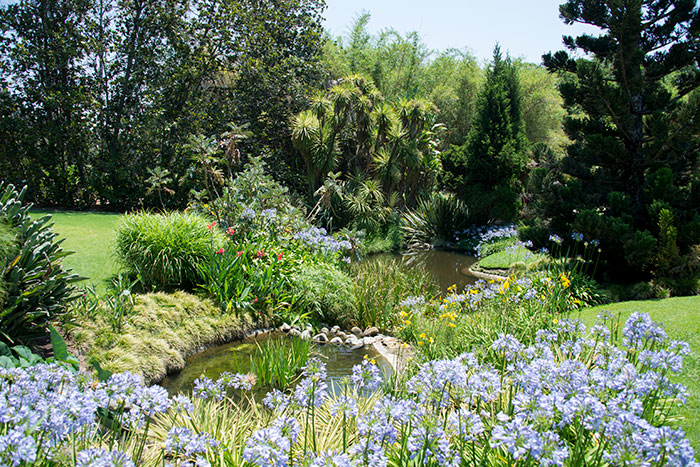
Two of the small ponds as they look today. Photo by Kate Lain.
When the job was done, well water replenished the ponds. Two pumps continue to recycle the water. Botanical staff dose the water lilies with fertilizer tablets annually, and resident fish, water fowl, and algaecide help maintain a healthy pond ecosystem and keep the water clear.
One of the Ponds’ major attractions, the koi, lived in large containers during the cleaning. Children will be especially happy to know that 40 to 50 additional koi joined them once the ponds were refilled. A member of the staff feeds the fish on a regular schedule, using a food formulated for their needs. (Tossing bread, crackers, or junk food into the ponds for koi or ducks disturbs the ponds’ ecosystem, so please heed the “Do Not Feed the Fish” signs!)
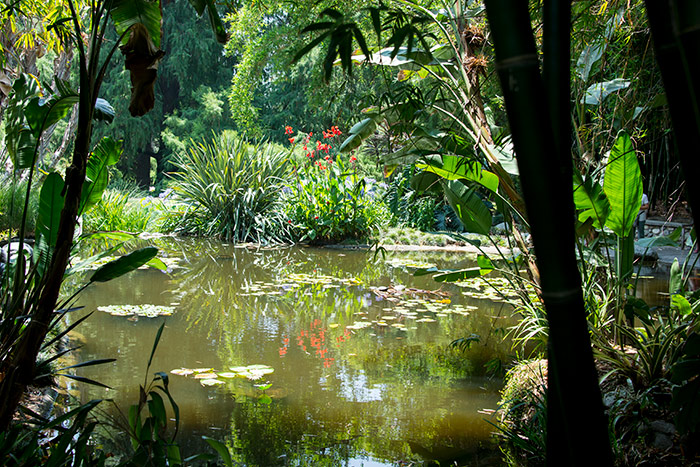
This large pond provides a cool and shady place to escape the heat of summer. Photo by Kate Lain.
Fittingly, a memorial plaque honoring William Hertrich, located near the large pond presided over by the statue of St. Francis of Assisi, reminds visitors of the ponds’ origins and Hertrich’s key role in The Huntington’s development. Moved in 2013 from an inconspicuous spot in the adjacent Jungle Garden, the memorial hails Hertrich for his creative genius and inspiration. The St. Francis of Assisi bronze recalls the historical value of the ponds as well: Clara Huntington, Henry’s daughter, sculpted it in the mid 1920s.
The Lily Ponds beckon visitors to sprawl on the lawn to watch the koi dart through the water and the mallards tending their young. No matter what the draw, this treasured site is in prime condition.
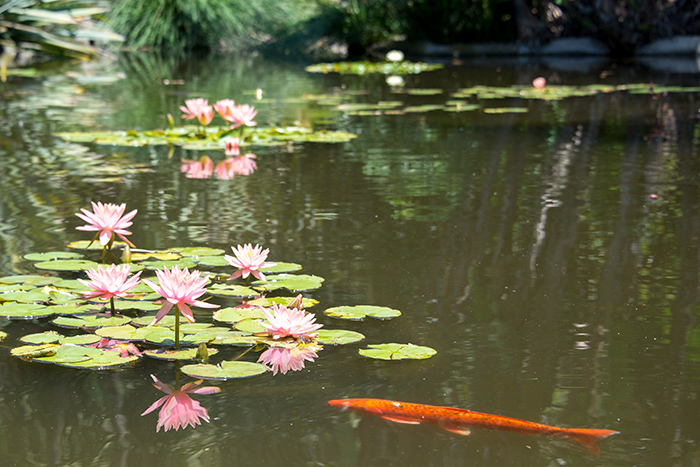
Koi swimming in one of the large Lily Ponds. Photo by Kate Lain.
Linda Chiavaroli is a volunteer in the office of communications and marketing.